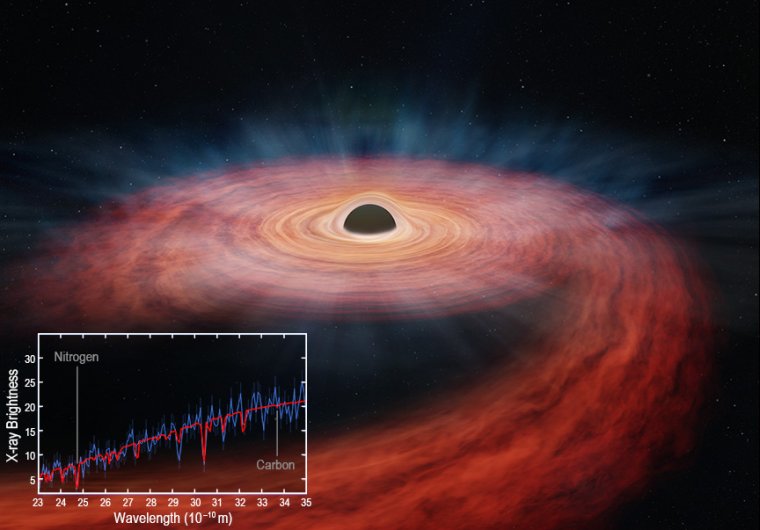Even huge stars are not always safe out there. When the orbit of a star three times as massive as our own took the star too close to a hefty black hole, the black hole’s gravity ripped the star’s guts out and scattered them across a cosmic crime scene.
Nearly a decade ago, this tidal disruption event caught scientists’ attention not only because of its enormity but also because the carnage happened “only” 290 million light-years away, which is relatively close to Earth. This event, termed ASASSN-14li, was almost mistaken for a supernova when it was discovered in 2014). While a closer tidal disruption event has been discovered since, ASASSN-14li has continued to draw astronomers because the star involved might be one of the largest, if not the largest, known to have been devoured by a black hole. Now, a new forensic analysis of this event brings more about the stellar victim to light.
Exhibit A
While the proximity of ASASSN-14li and the cause of the star’s death were already known, the research team had to think like cosmic medical examiners to figure out the size of the star. For this, they relied on data from NASA’s Chandra and ESA’s XMM-Newton X-ray telescopes. When a star is ripped apart by the gravitational forces of a black hole, what is left of the star is heated so much by the intensity of those forces that a flare occurs. Flares like this can be observed in X-rays, as well as visible and ultraviolet light.
During the flare, the black hole’s accretion disk will draw in gas from the disrupted star remarkably quickly, a process that also releases energy. Chandra and XMM-Newton observed this when the event was first discovered. Rapid accretion detections like this are rare because most stars annihilated by black holes tend to be smaller and therefore not contain so much gas.
Observing the event in X-ray wavelengths allowed the telescopes to detect carbon and nitrogen released into the black hole’s accretion disk. How much nitrogen was present relative to carbon can help scientists figure out the star’s mass when those amounts were compared to levels of those elements in the Sun. Heavier stars contain more nitrogen than carbon because of the way they fuse hydrogen into heavier elements.
Previous simulations of tidal disruption events like ASASSN-14Li had not been able to show whether the nitrogen and carbon that ended up in the black hole’s accretion disk were coming from a high-mass star—the team couldn’t rule out the possibility of the black hole feasting on a lower-mass star that had already shed its outer layer of material.
Identifying whether a massive star really had met its end in ASASSN-14li could be compared to checking DNA evidence from the scene of a crime, except with elements instead of genes. The gas in the black hole’s accretion disk had levels of nitrogen up to 100 times than the Sun’s and much lower levels of carbon (only about 40 percent of what the Sun contains). This suggests that the black hole had eviscerated a star with about three times the mass of the Sun.
Future investigations
Ramirez-Ruiz and his team suggested that the gas observed by Chandra and XMM-Newton’s X-ray vision shows that the suspicious gas in the black hole’s accretion disk was most likely from just one star because of the extreme ratio of nitrogen to carbon. It’s difficult to find a combination of stars that would produce a similar ratio.
“ASASSN-14li is exciting because one of the hardest things with tidal disruptions is being able to measure the mass of the unlucky star, as we have done here,” said astrophysicist Enrico Ramirez-Ruiz of UC Santa Cruz, one of the authors of the study, in a NASA press release.
ASASSN-14li has now become a precedent on which to base the search for more massive stars that are destroyed by black holes. Its mass is similar to the masses of stars in a cluster near our galaxy’s supermassive black hole, Sagittarius A*. If star clusters in other galaxies have similar locations relative to their supermassive black holes, there might be more tidal disruption events involving massive stars than was previously thought. It just needs some forensic investigation.
Astrophysical Journal Letters, 2023. DOI: 10.3847/2041-8213/ace03c



3175x175(CURRENT).thumb.jpg.b05acc060982b36f5891ba728e6d953c.jpg)
Recommended Comments
There are no comments to display.
Join the conversation
You can post now and register later. If you have an account, sign in now to post with your account.
Note: Your post will require moderator approval before it will be visible.